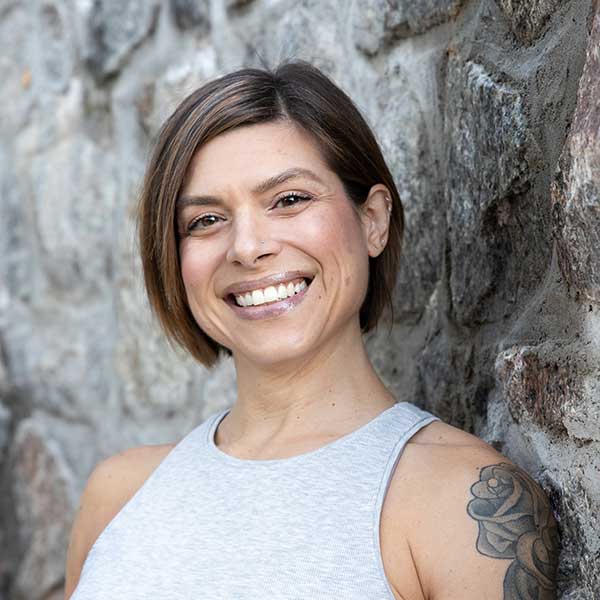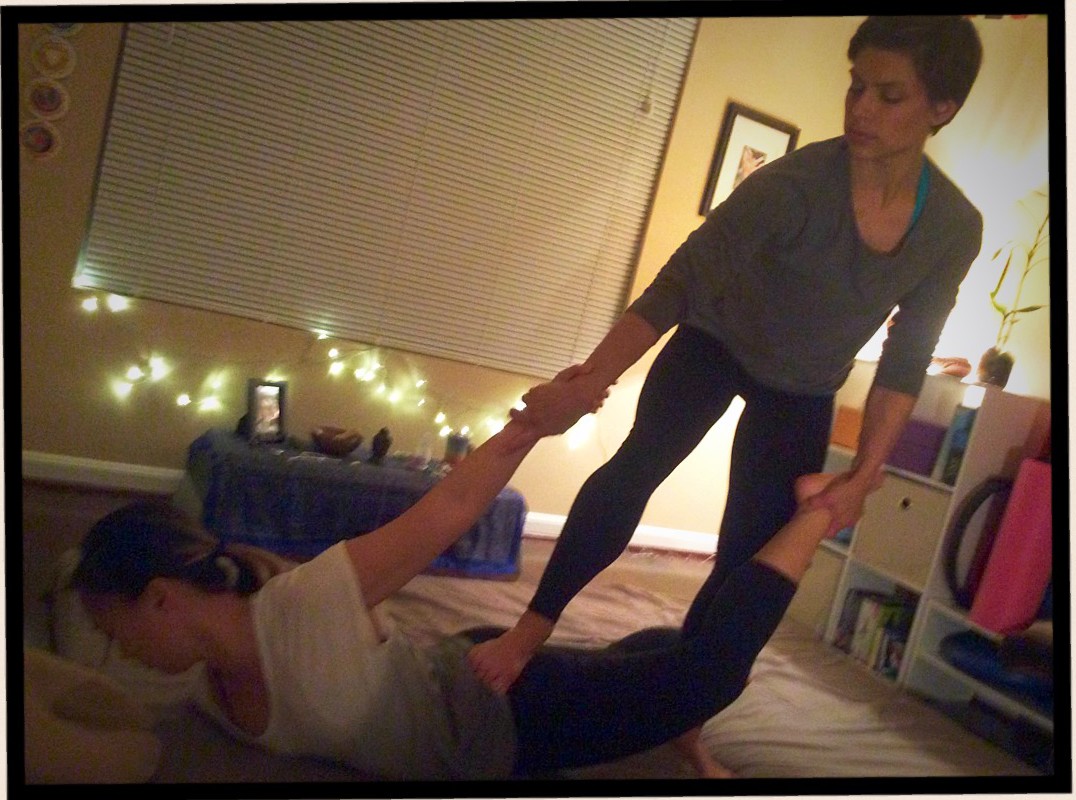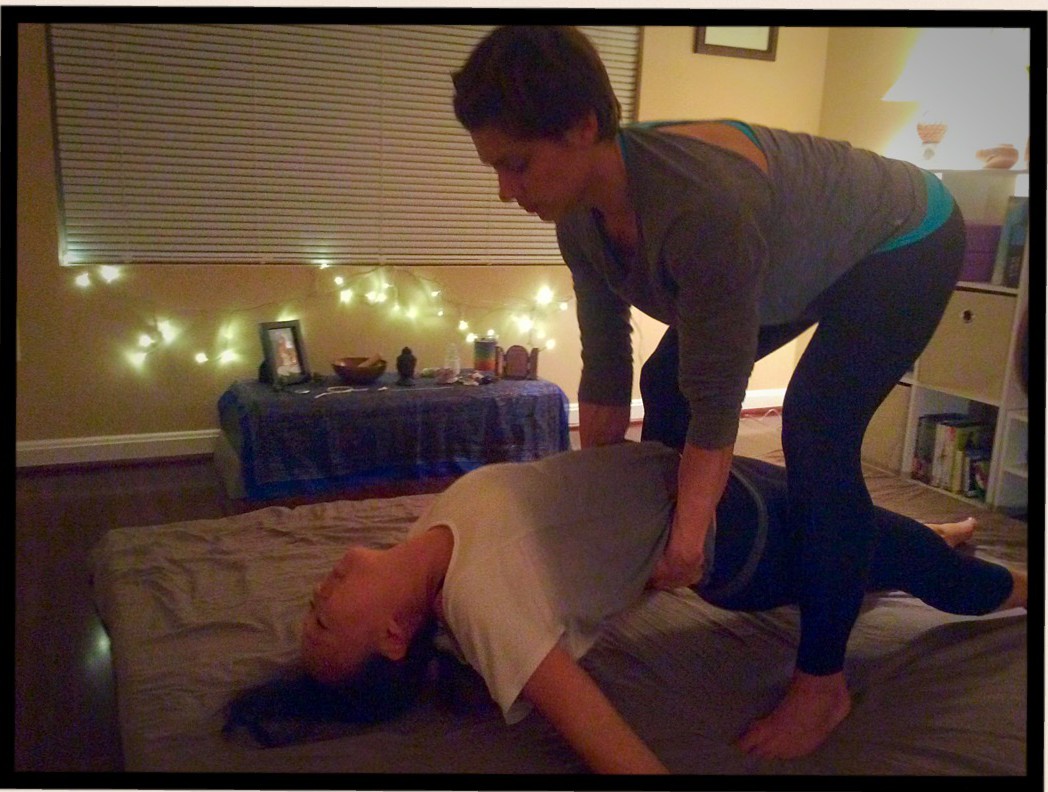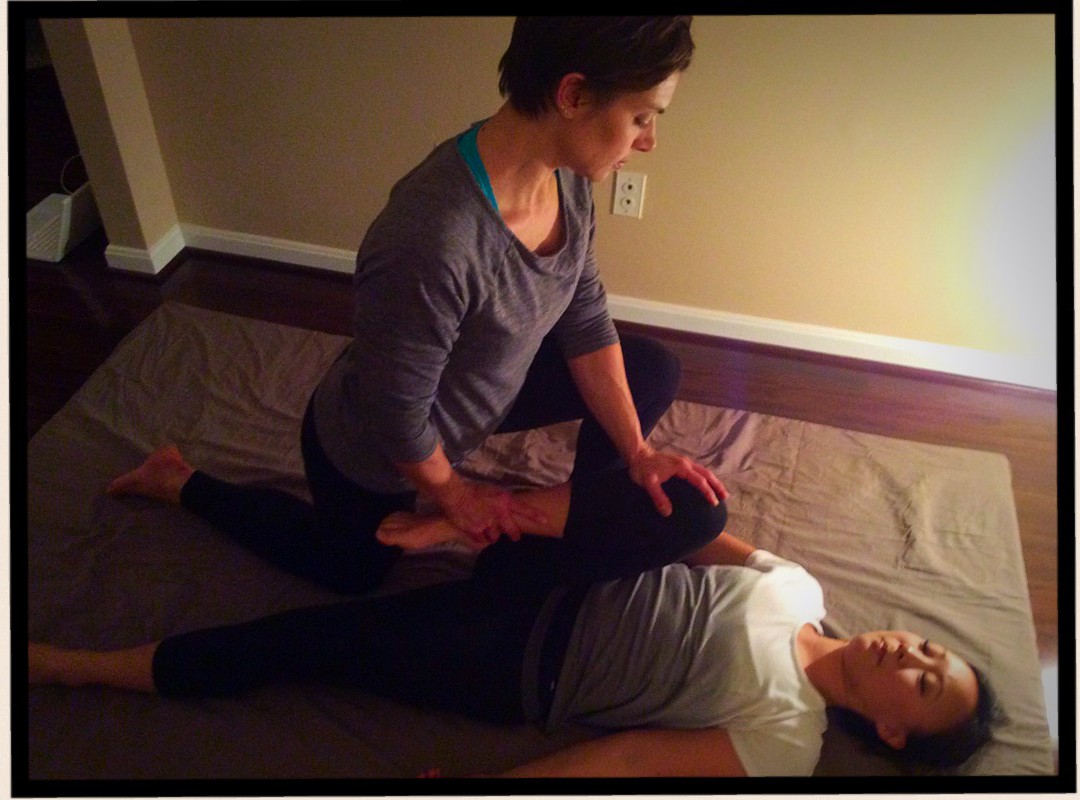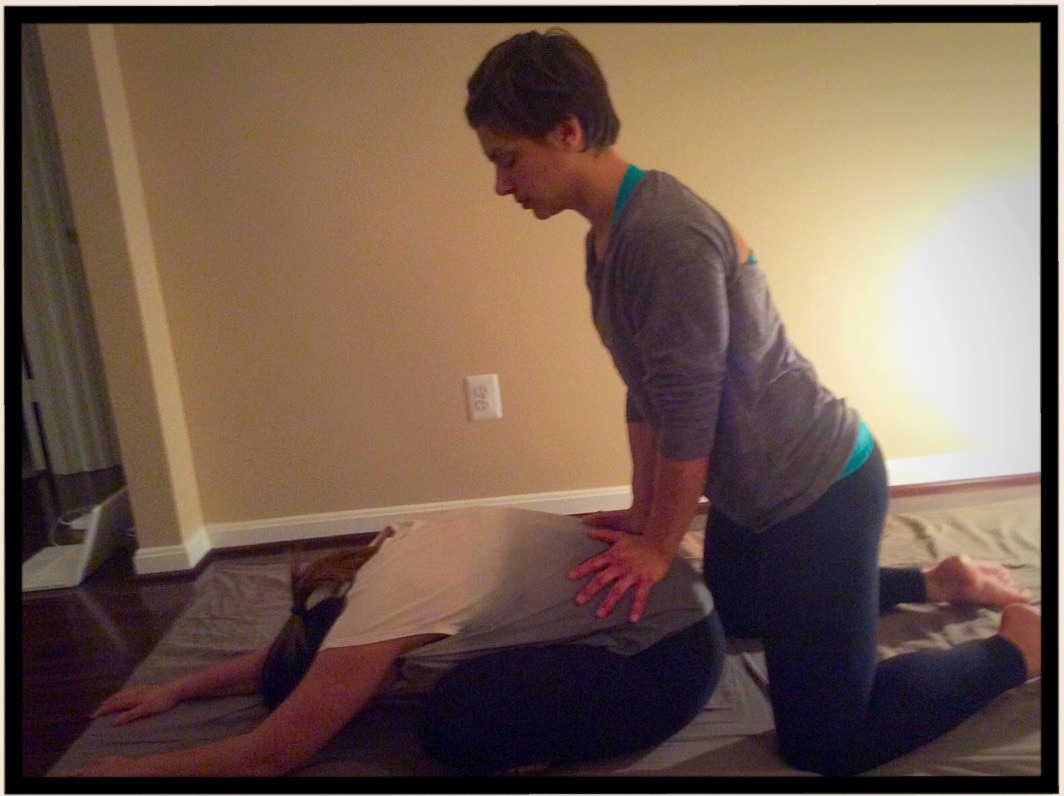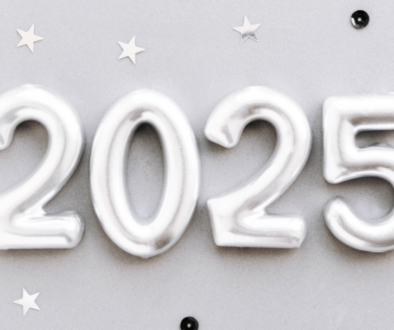What is Thai Massage?
What is Thai Massage? How is it different from Swedish or Deep Tissue Massage?
Short answer: The session is done fully clothed on a mat on the floor. It involves acupressure/compressions with the practitioner’s thumbs, fingers, hands, elbows, forearms, knees, and feet. The practitioner moves the client through a series of stretches that look like yoga poses. People often say that it’s like having someone do yoga to you.
More Info: Nuat Thai or Thai Massage (also called Thai Yoga Massage, Thai Therapy, or Thai Stretching) is one of the three branches of Traditional Thai medicine:
- ENERGY (Thai Massage)
- PHYSICAL BODY (medical doctors and herbal medicine)
- MIND/HEART (Monks)
Here in the West, we are experts at caring for the physical body and we’ve got mind and heart covered. All of the energy work, however, has been adopted from the East: Yoga, Thai Chi, Acupuncture, Reiki, and Thai Massage. These practices address the blocked and imbalanced energy that causes dis-ease in the physical and emotional body.
Thai Massage releases the blocked energy through the application of compressions and stretches. The energy, or LOM, moves by way of the 72,000 SEN lines. This is akin to the prana that flows through the nadis in Ayurvedic medicine and qi that travels via meridians in Chinese Medicine. Through the practitioners intention, movements, and breath, s/he becomes a conduit. This allows for the release and flow of energy which facilitates the client’s own ability for self-healing.
Thai Massage has been cultivated for centuries from many different influences:
- Most importantly, the therapy’s roots go back 2500+ years with indigenous Thai healing practices, like back walking and shaminism.
- 543 B.C.E., Theravada Buddhist contributed ideas like compassion (Metta) and a focus on the breath.
- Between 300 and 500 C.E., Ayurvedic medicine introduced the four elements (Earth, Water, Fire, and Air). Lom, the word for the energy, actually means air.
- Between 600 & 1200 C.E., the Thais adapted Hatha Yoga to create Thai Yoga (luesii dat ton or self-stretching) to assist with their meditation practice. The stretches then became part of the Thai Massage.
- 700 C.E., Chinese medicine and concepts like the meridians help shape the ideas of the sen lines.
The most important concept by far in Thai culture and Thai Massage is the idea of METTA, or “lovingkindness.” This is the compassion the practitioner feels for his/her client. It is a wish of health, happiness, peace, and safety for the client. Through this intention and the focus on breath, Thai Massage becomes an energy practice and a meditation for both client and practitioner.
Alicia Cross is a Certified Personal Trainer, Wellness Coach, and Yoga Instructor with more than 15 years’ experience working with clients in classes and one-on-one. She is a yogi, meditator, vegan, and lifter of heavy things. If you’re ready to discover the strength and peace that comes from within, email Alicia@AliciaCrossTraining.com.
